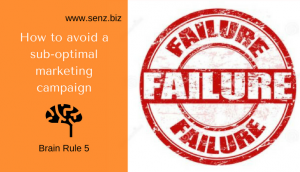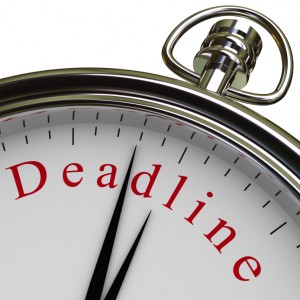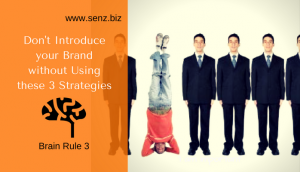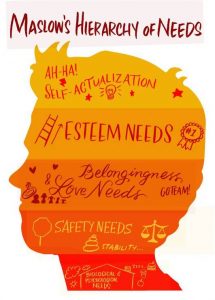- Home /
- brand strategy
Brain Rule 5 – to turn failure into success

How to avoid a sub-optimal marketing campaign
Many marketing-campaigns are sub-optimal. This article covers the 5th brain rule, a very basic one, but many marketers forget to use it in their brand strategy and therefore lose many clients.
Why do people show up at the event of your competitors and not at yours? Why don’t they buy your new vitamin product or invest in your new technology?
Psychology plays a big part when people make a decision. Offering pleasure and a better future is not a main driver to getting them into action. That’s why you shouldn’t focus on pleasing your clients.
What kind of person is most likely to buy a hamburger? Right, somebody who is hungry! Not the people who just like hamburgers or those who have had hamburgers in the past. Although those last two groups could be good leads, too. They need to be hungry… So what does this mean?
Let me give you another example.
Who is most likely to buy your weight management product? An overweight man or a lady who needs to fit into her evening dress to meet her new lover? It’s the lady. Why? Because, like the man who is hungry, she is facing a problem, that she wants to solve.
Avoiding immediate pain is much more motivating than gaining immediate pleasure. This means that, talking about the direct benefits of your product will not immediately grab people at first. When do you immediately take action? Not if you are promised something nice in the future. You take action if you want to move away from a negative situation.
Problems (pains) trigger our urge to survive and make us take action
The 5th Brain Rule says: Focus on the Pain, not on the Pleasure
Your reptilian brain, that takes the decisions, wakes up if there is a problem. It will tell you: be careful, danger! And will immediately be alerted and take action in order to survive.
The 5th brain rule is related to the most basic of all Mazlow’s needs: the need to survive. Haven’t you heard about Mazlow, yet? Read the first brain rule to learn more. The need for survival is the need for food, drink, shelter, sleep and oxygen. If you are cold, sick or hungry you will do your utmost to change this situation.
So, what can you do take bring this rule into practice?
How can you make people decide for your brand, event, therapy, company or hospital, using brain rule 5?
1 Describe the real PAIN
You can press the Survival Button of your clients by describing their pain.
Domino’s Pizza shows a good example. They knew that their consumer’s true pain was not that they didn’t have pizza. The real pain was in not knowing when the pizza would arrive. By installing an online ordering system that tells you exactly when your pizza is on its way, they increased sales exponentially.
So, find out what the real pains of your ideal client are. Ask them, search which posts have many reactions, check which books on your topic score high on Amazon. Mention their problems in your communication, so they will feel understood and feel the urge to take action.
2 Translate your USP’s into Survival Triggers
Translate your USP’s into the impact it has on financials, time, relationships, health or happiness. These have a real impact on your clients.
For example: a kidney clinic helps clients to improve their lifestyle. That’s a USP. How can you translate this into survival triggers? Improved lifestyle can result in less dependence on others and therefore improved happiness. Less dependence on others is a stronger trigger than an improved lifestyle. Also improved mobility and less time that you need to spend on check-ups are strong triggers.
3 Create Scarcity and Urgency
Show your clients that they need to be fast in order to not miss out on your offer.
How this works? Your survival button is pressed when something is taken away from you. You will immediately take action. May be you have heard of FOMO before: The Fear Of Missing Out. This is one of the most impactful psychological strategies you can use to increase the success of your marketing efforts and brand promotion.
People hate it if they miss out of something. A study states that 69%of millennials feel a fear of missing out when they cannot attend some sort of event. This applies to users of all age groups!
So, use phrases like:
Don’t miss out
Only 10 places left
Tomorrow higher price
4 Create Contrast
Be very clear about where you are different than others. This makes it very easy for potential clients to choose for you. This can be done by a contrast-rich description versus the competition, but even better by a picture.
Our reptilian brain, which takes the decisions, is very alert to contrast. Our forefathers were alerted to a sudden movement in a calm landscape or any other change. This helped them to survive.
Brain Rule 5 triggers your customer’s need to survive. This makes them take action. So, it is not about listing the mode of action of your product, what kind of services you offer or even your USP’s. Knowing and listing your customer’s problems triggers them. And offering them a scarce solution that they should pick urgently helps them make up their mind. Apply brain rule 5, help your clients solve their problems and create a unique position!
Do you know more ways to trigger the need to survive? Share them in the comments.
Want to learn more ways to build a leading market position? Click here:
How you add 95% to your influential power
3 Do’s & Don’ts to engage your customers
Don’t introduce your brand without using these 3 strategies
10 ways to increase your revenue through trust
With survival greetings,
Karin
Senz – brand positioning & client attraction, www.senz.biz
p.s. Want more strategies to build a leading market position in the healthcare or services market? Click here to get access to our FREE resources with the newest marketing strategies and Senz & Brain Tips
Brain Rule 3 – don’t Introduce your Brand without Using these 3 Strategies
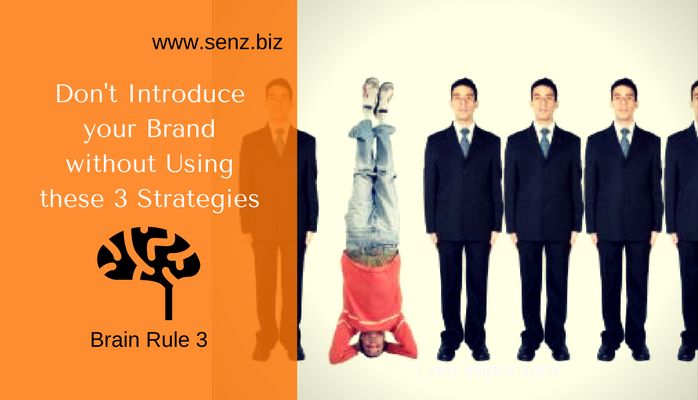
Brain rule 3 – to make clients love your brand
The whole day, your clients are influenced by millions of triggers. So, how do you get into the mind & heart of your clients, if you are one out of millions? How can you make clients love your brand?
Brain Rule 3 plays an important role!
The good news is that our reaction to triggers is programmed in our brain. Scientists do not know yet how it all works, but what they know is that it started long ago.
This makes me think of the following cartoon:
A HR-manager asks a monkey:
Do you want a salary increase of 100%, 20 extra free days, a pension and a bonus of 100.000 Euro?
Or do you want this banana?
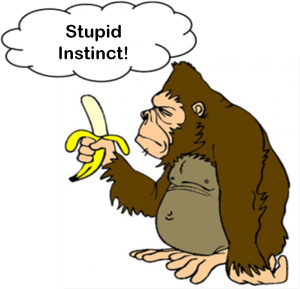
Oh dear, the monkey chooses subconsciously for the banana!
We are 100% similar to this monkey. Also we, and our clients, follow our primitive urges.
Successful marketers and leaders acknowledge these primitive urges and deeper needs of people.
This time, we take a look at one of the most important needs of people, one of the strongest powers in the universe.
Why do you hear laughing during comics?
Why do you follow the latest fashion trends?
Why do you take a look at your neighbor if you don’t know how to use your cutlery?
We are programmed to stick together. Every person subconsciously wants to be part of a group, which has something in common; really, also you. ‘Belonging to a group’ and being a valuable group member, is a matter of live or die. If you deviate from the majority, your brain will release a signal, which feels like a punishment.
This is a very important brain-principle, which drives our behavior; and a very strong element to attract clients. Our need to belong to a group is so big that people even decide to connect to sects, radical groups and terroristic gangs. This brings us to Brain Rule 3.
Brain Rule 3: Create a group of like-minded clients
This rule is closely related to Mazlow’s need to belong.
Having solid social connections can be as important to human health and happiness as having food, water, and shelter. Research shows that your odds of survival increase by 50% by having social relationships. This effect is comparable to the effects of smoking and excessive drinking on mortality, suggesting that having quality social ties is vital to our lives.
Okay, let’s list the 3 strategies to tap into the need of social belonging:
1. Focus on a specific group of people and share who they are.
Most likely to buy your products are people who share the same personality, beliefs and the same WHY with you.
2. Make clear what makes you different than others.
People love their own group more than others.
3. Share who is already buying/liking you.
People with the same profile are likely to follow.
This is a great example how Brain Rule 3 works. Want to try?
A hotel tested several messages to make guests use their towel more than once. Which one had most effect?
1. Help the hotel save energy
2. Let’s together save the environment
3. Just like other guests, help to save the environment
4. Just like other guests, help to save the environment (75% of the guests in this room participated in our savings-program)
5. Use our energy sources sparingly, think about our future generation
6. Help to save the environment
This is how people will start loving your brand. They will feel it’s their brand, since it says so much about them. Ogilvy calls them Lovemarks; and Lovemarks transcend brands. They reach your heart as well as your mind, creating an emotional connection that you just can’t live without.
Take a brand away and people will find a replacement. Take a Lovemark away and people will protest its absence. Lovemarks are a relationship, not just a transaction. You do not just buy them, you embrace them passionately. That’s why you never want to let go.
It is clear that using brain rule 3 creates Brand Love and Brand loyalty, which can be very profitable.
Do you know more ways to implement Brain Rule 3: Share them in the comments.
With love,
Karin

